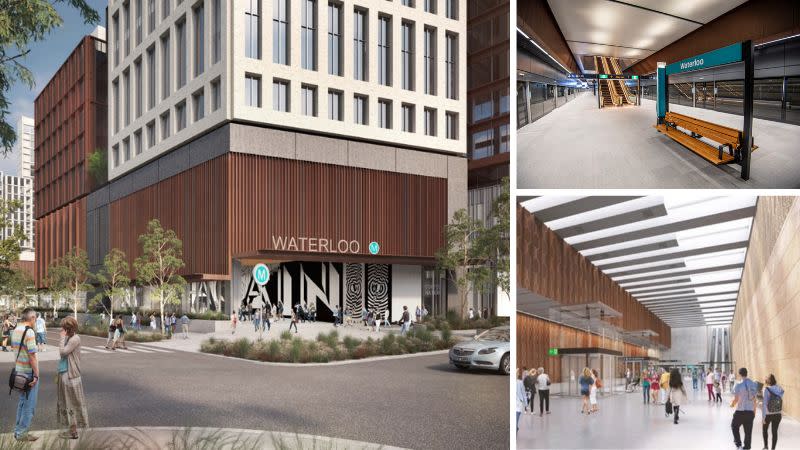The transport infrastructure centrepiece of a Sydney urban renewal development that will deliver hundreds of new apartments is complete.
Waterloo Station is the first of six new train stations on the city’s metro line to cross the construction finish line and is expected to be used by 19,000 passengers a day when the line opens later this year.
Meanwhile, about 25m above the underground mega station in the city’s inner-south, the $900-million Waterloo Metro Quarter precinct is taking shape.
Construction of a nine-storey building with 70 social housing apartments and a rooftop garden has topped-out and is due for completion next year. It is one of four planned over-station buildings designed by Hassell, Aileen Sage Architects, Woods Bagot and Bates Smart.
The Waterloo Metro Quarter project is a joint venture between ASX-listed Mirvac and developer-builder John Holland in collaboration with the NSW Government.
Overall, it will include 220 apartments—including social, affordable homes—student accommodation, retail outlets and commercial space as well as a 1350sq m public plaza and a carpark.
▲ Renders of the Waterloo Metro Quarter development in Sydney's inner-south.
NSW housing minister Rose Jackson said the construction milestone at Waterloo Metro Quarter was just the start of more social and affordable homes for the area.
“Waterloo Estate is one of the state’s largest social housing renewals,” she said.
“As part of the renewal, we have boosted the number of social and affordable housing in Waterloo South to 50 per cent, delivering approximately 1500 homes to those in need.”
Waterloo Station is Sydney’s first new train station in five years.
“This mega-station will be a game-changer for Waterloo, Redfern and Alexandria, and significantly reduce traffic on our inner-city roads, while alleviating pressure at nearby Redfern and Green Square stations,” NSW transport minister Jo Haylen said.
The station took more than four years to complete, including the excavation of 330,000 tonnes of material. At peak times, its 170m-long platforms will receive a train every four minutes.
NSW Premier Chris Minns said the project was “a good example of what happens when we link the provision of housing and public transport”.
“Everybody wins,” he said. “More homes close to our train stations means we’ll have better connected communities.”



![[+] Greenfield dilemma](/_next/image?url=https%3A%2F%2Fimages.ctfassets.net%2F8pr762qjocl3%2FZlsFAa3UgYnS2GAllGpu9%2F873fa518f16ef970101830950ad2def6%2F____greenfield_dilemma_WEB.jpg%3Fw%3D743&w=3840&q=75)






